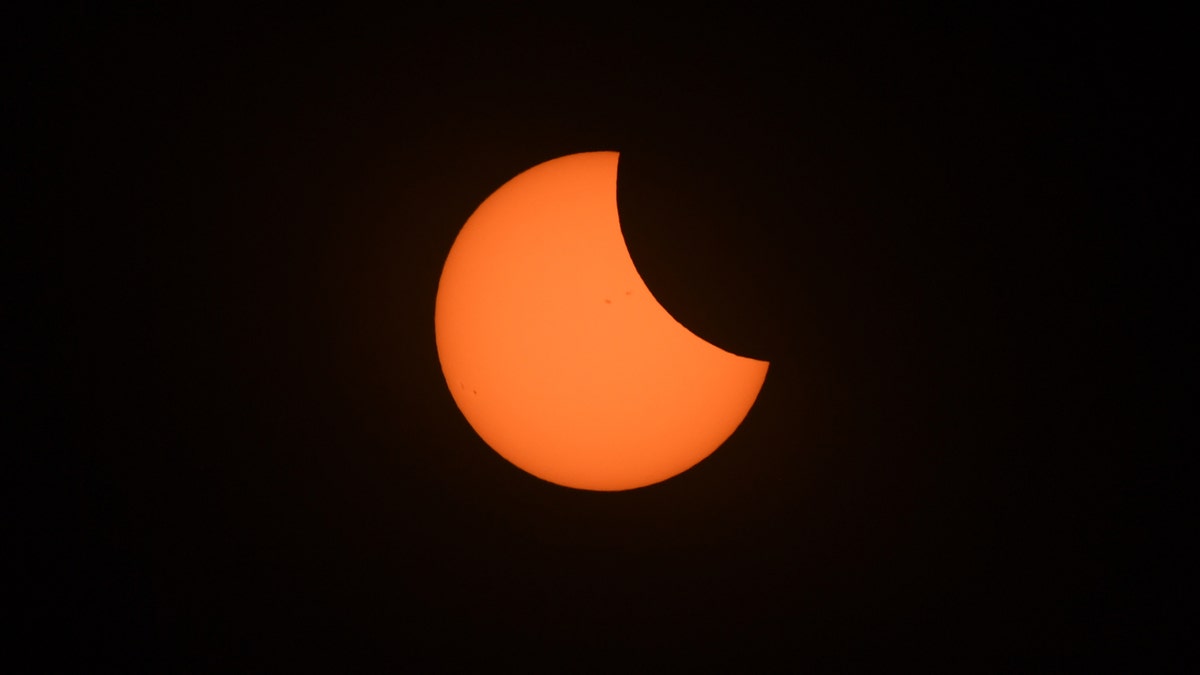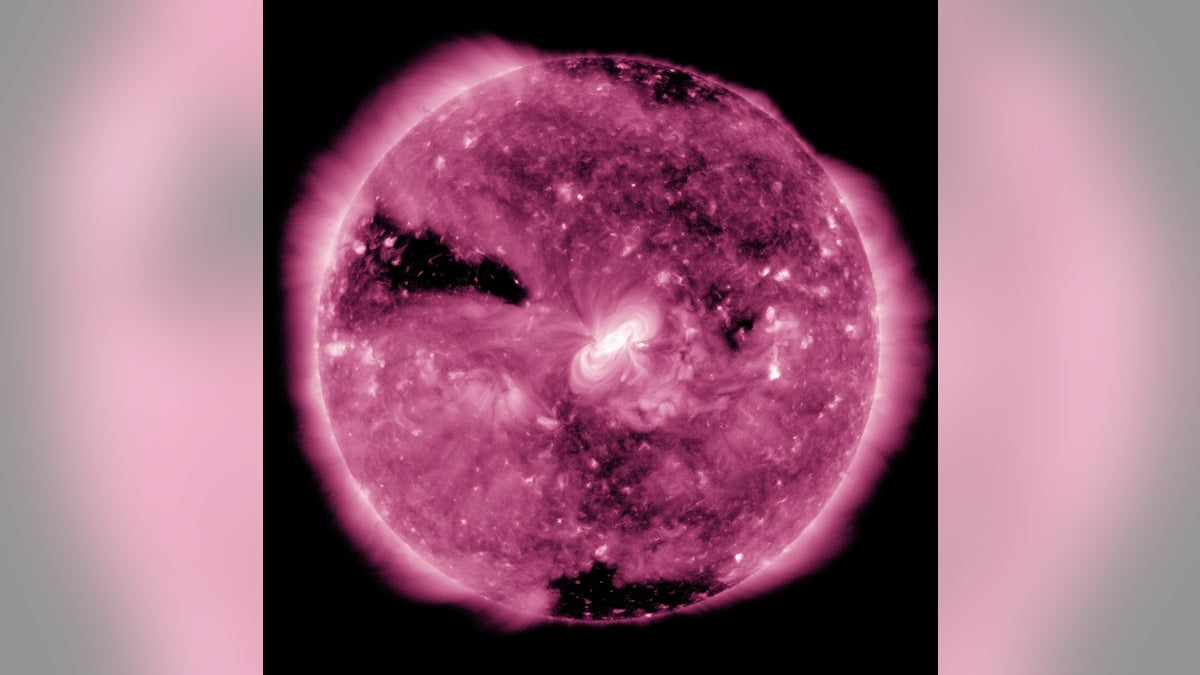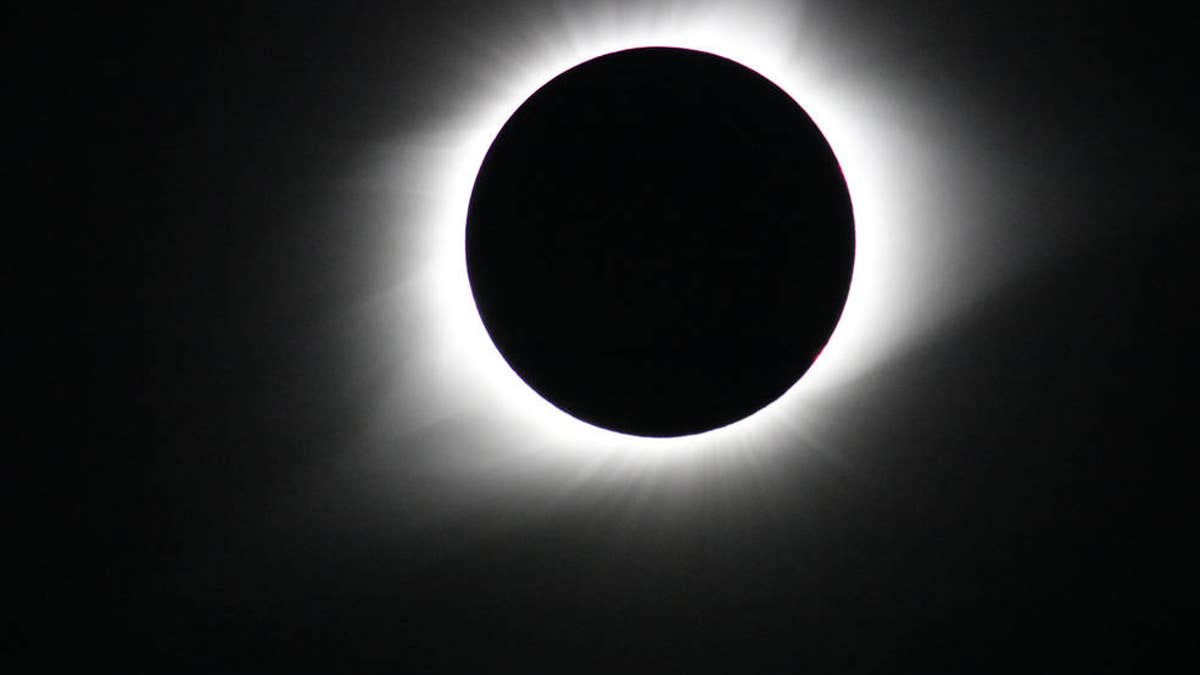Solar Eclipse 2017: Best images across America
The Great American Eclipse finally arrived and did not disappoint. Here are the best images from the big event
A stunning total solar eclipse will plunge a swath of South America into darkness Tuesday in the world’s first total solar eclipse since 2017.
Excitement is mounting ahead of Tuesday’s unusual event. “The July 2nd eclipse is the first total solar eclipse since the Transcontinental Total Solar Eclipse in summer of 2017,” explained Dr. Paige Godfrey, an astrophysicist at the Slooh telescope network, in a statement emailed to Fox News. “That was almost two years ago now, and people are still talking about it as the greatest celestial event of their lifetimes. That event has had a lasting effect that has heightened excitement for many of these to come.”
Millions are expected to gaze at the cosmic spectacle that will begin at 2:24 p.m. EDT in the South Pacific and sweep along a path 6,800 miles across open waters to Chile and Argentina, the only places that the total eclipse will be seen aside from an uninhabited island out in the ocean.
TOTAL SOLAR ECLIPSE WILL PLUNGE PARTS OF SOUTH AMERICA INTO DARKNESS
“It’s eclipse day!” tweeted NASA Sun and Space on Tuesday.
The line of totality also passes within a mile of the site for the planned Giant Magellan Telescope at La Serena, on the edge of the Atacama Desert in Chile.
In a statement emailed to Fox News, Patrick McCarthy, astronomer and vice president of the Giant Magellan Telescope, said that officials involved in the project are looking forward to seeing Tuesday’s total solar eclipse.
SOLAR ECLIPSE 2017 IN PICTURES
Weather permitting, a partial eclipse will also be visible in some places in Ecuador, Brazil, Paraguay and Uruguay, according to timeanddate.com.

A youth dressed as a shaman arrives to take part in a photo session before Tuesday's total solar eclipse, in La Higuera, Chile, Monday, July 1, 2019. (AP Photo/Esteban Felix)
A solar eclipse occurs when the Moon passes between the Earth and the Sun and scores a bull's-eye by completely blotting out the sunlight.
Tens of thousands of tourists flocked to cities and towns across northern Chile to stake out spots in one of the world's best locations to witness Tuesday's total solar eclipse.
SOLAR ECLIPSE: THE BIG EVENT IS FINALLY HERE
The eclipse is expected to make its first landfall in Chile at 3:22 p.m EDT in La Serena, a city of some 200,000 people where the arrival of more than 300,000 visitors forced the local water company to increase output and service gas stations to store extra fuel. Police and health services were also reinforced.

File photo - Total eclipse of the sun at the location of the longest duration of 2 minutes and 40 seconds in Hopkinsville, KY. Aug. 21, 2017. (Photo by Jonathan Newton / The Washington Post via Getty Images)
The total eclipse will begin there at 4:38 p.m. and last about 2½ minutes.
After making its way across Chile and Argentina, the full eclipse will end at 4:44:46 p.m. EDT according to timeanddate.com.
WHAT CAUSES A TOTAL SOLAR ECLIPSE?
Slooh notes that its southern hemisphere observatory, the La Pontificia Universidad Católica de Chile (PUC), is not in the line of totality. However, the organization is working with partner observatories and PUC staff to capture a live stream of the event.

File photo - Enthusiasts Tanner Person (R) and Josh Blink, both from Vacaville, California, watch a total solar eclipse while standing atop Carroll Rim Trail at Painted Hills, a unit of the John Day Fossil Beds National Monument, near Mitchell, Oregon, U.S. August 21, 2017. (REUTERS/Adrees Latif)
“The 2019 South American solar eclipse is not an easy event to capture,” explained Slooh’s Chief Astronomical Officer, Paul Cox, in the statement. “Unlike the 2017 eclipse, the path of totality (the 90-mile wide path of the Moon's umbral shadow) only makes landfall across a narrow stretch of Chile and Argentina, and a tiny uninhabited South Pacific island. Having raced across the Pacific Ocean at over 6,000 mph, by the time the Moon's shadow reaches the west coast of Chile, the Sun will be low to the horizon, with the partial eclipse phases occurring just as the Sun is setting.”
Many Americans fondly remember the solar eclipse of 2017, which captivated millions of people across the country.
NASA'S PARKER SOLAR PROBE BLASTS OFF ON EPIC JOURNEY TO 'TOUCH THE SUN'
The coast-to-coast eclipse on Aug. 21 of that year carved a 70-mile wide path of totality from the Pacific coast to the Atlantic, with hordes of people donning solar eclipse glasses to experience the unusual event. The eclipse, which began in Oregon and ended in South Carolina, was the first to cross the continental U.S. since 1918.

NASA's Solar Dynamics Observatory saw a total eclipse from space on Feb. 11, 2018. (Joy Ng/NASA's Goddard Space Flight Center/SDO)
Families from all over the country flocked to cities in the line of totality, such as Charleston and Nashville, which hosted over 1 million visitors.
The next total solar eclipse in the U.S. will be in 2024 and the next coast-to-coast one won't be until 2045.
NASA’S PARKER SOLAR PROBE BREAKS RECORD, BECOMES CLOSEST SPACECRAFT TO THE SUN
NASA will be closely monitoring the July 2 total eclipse in South America. “Studying the Sun during total solar eclipses helps scientists understand the source and behavior of solar radiation that drives space weather near Earth, which can affect the health of astronauts in space and the durability of materials used to build spacecraft,” it explains NASA, on its website. “Similar data will be important in planning NASA’s return of astronauts to the Moon in 2024 and eventual crewed missions to Mars.”

File photo - A photo taken during the total solar eclipse on Aug. 2017. (NASA/Gopalswamy)
The space agency will be live-streaming the total solar eclipse with the Exploratorium in San Francisco. NASA will also be providing updates from its Parker Solar Probe.
CLICK HERE TO GET THE FOX NEWS APP
The Probe blasted off from Cape Canaveral Air Force Station atop a United Launch Alliance Delta IV Heavy rocket on Aug. 12, 2018. The $1.5 billion mission is taking humanity closer to the Sun than ever before.
The Associated Press contributed to this article. Follow James Rogers on Twitter @jamesjrogers

